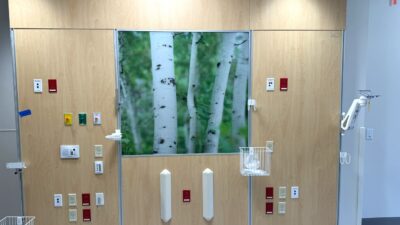Supplementing engineering knowledge with market knowledge will grow your career and your company’s business.

Are you just entering the workforce, or have you recently changed positions or companies and find that you need to quickly build your knowledge and understanding of your company’s markets? Regardless of your circumstance, having a solid working knowledge of your markets and your customer’s business is key to building your confidence and success as an engineer.
Developing market knowledge takes time and commitment. It involves developing an awareness of the information resources that offer insights into the market segments in which your firm operates, and some key relationships with industry contacts. Here are some methods that have served me well, which I recommend you consider toward the development of your own care
- Seek mentoring: Take the time to ask your principals and marketing teams about your customers and their projects; ask them to share their experiences in the markets and information resources; and ask them for the opportunity to sit in on client meetings as an observer to learn more about the client’s business.
- Build your knowledge and resource network: Take a few minutes each week to read about local market conditions, your customer’s industry, and about issues that are impacting your customer. This can be easily done by subscribing to newsletters and trade magazines; setting up Google alerts and RSS feeds for articles, press releases, etc.; and joining relevant social media groups like Facebook and LinkedIn.
- Understand your customer’s business: Make sure you understand why the customer is undertaking the project—even if you have a small role on the project. Understanding what drives the customer to undertake a new project and how that project fits within its business plans provides a context for you to do your best work. A good place to start is to ask the customer about the role the building or facility takes in the business: Is the building a cost center or a revenue generator? How long does the customer plan to own the building? Are there unique business requirements it is trying to achieve?
- Develop your relationships: Get involved in the customer’s industry and business organizations. Often, these industry associations give us the opportunity to interact with decision-makers from all levels of the customer’s organization. Building relationships can be awkward for some, and these organization events are often low-key education and networking opportunities.
- Leverage your existing project-related relationships with key equipment manufacturers and suppliers. Many of these companies have internal marketing resources monitoring the same markets and could have insights and information on your customers and their markets that could be valuable in your own customer development efforts.
- Study your competition: How are they doing in their market segment, and how do they share that knowledge internally?
This knowledge you are developing is just information unless it is applied. In addition to applying market knowledge to your existing projects, work with your principals and marketing department to develop opportunities to share this knowledge by assisting in the development of proposals and project kick-off meetings. Provide input into digital marketing efforts such as the company website, blog, or newsletter. Attend customer events and other business development activities.
– Sidebottom is the owner of AMK LLC, a management and marketing consulting firm that provides market development and growth expertise to small and medium sized firms. She has 20 years of management and leadership experience in both consulting engineering and Fortune 100 organizations. Sidebottom is a graduate of the University of Maryland and has completed leadership development programs at The Center for Creative Leadership and UTC/Carrier.
What’s a market?
In engineering classes, we’re not generally taught about markets and how to consider markets in designs. Buildings and systems are not just designed; they are designed for a purpose. These purposes are often distinct or classifiable into markets, such as healthcare, education, commercial real estate, and communications. The buildings used in these markets can include hospitals, schools, office buildings, and data centers. Such markets might have very different purposes or highly specific codes, standards, and regulations; they have different expectations or tolerances for reliability, safety, construction costs, and operating costs. Within these markets there tend to be leaders and experts; dominant manufacturers and service providers; professional societies and industry associations. There also are dominant publications, Web portals, conferences, and trade shows.
Recommended Sources
Some of the sources I regularly consult include:
- American Institute of Architects Consensus Forecast published by Kermit Baker: Provides a balanced view of the market and market conditions
- The Federal Reserve Beige Book: Published eight times a year, providing antidotal information on economic conditions collected by each of the Federal Reserves
- Wall Street Journal’s Property Report: Published each Wednesday on developments in the commercial real estate markets
- Specific market organizations such as:
- ASHE: American Society of Healthcare Engineers
- Center for Health Design
- NACUBO: National Association of College and University Business Officers
- SCUP: Society for College and University Planning



